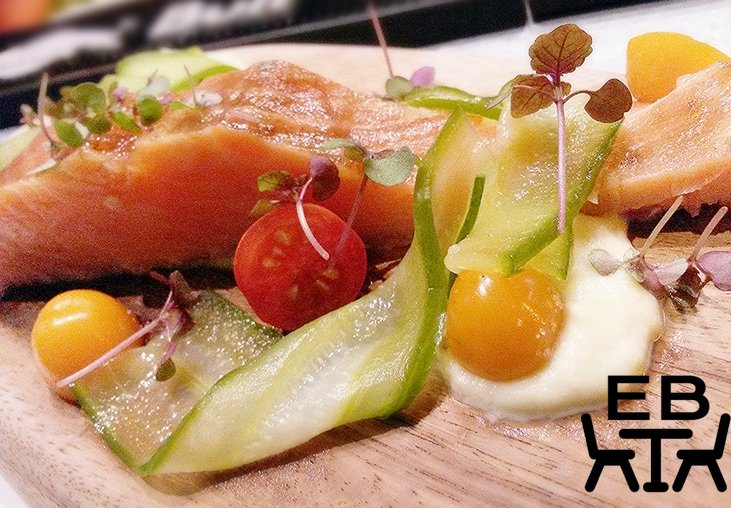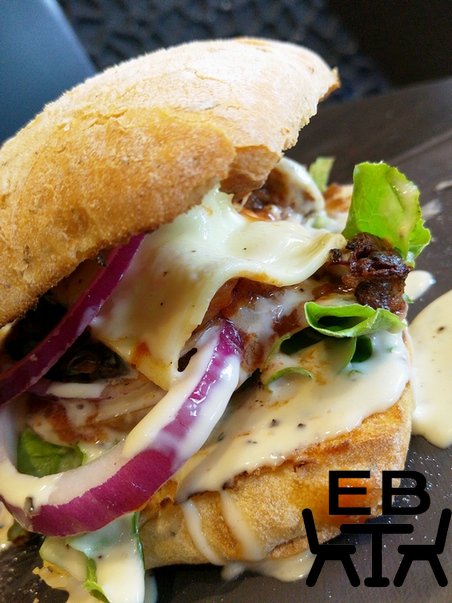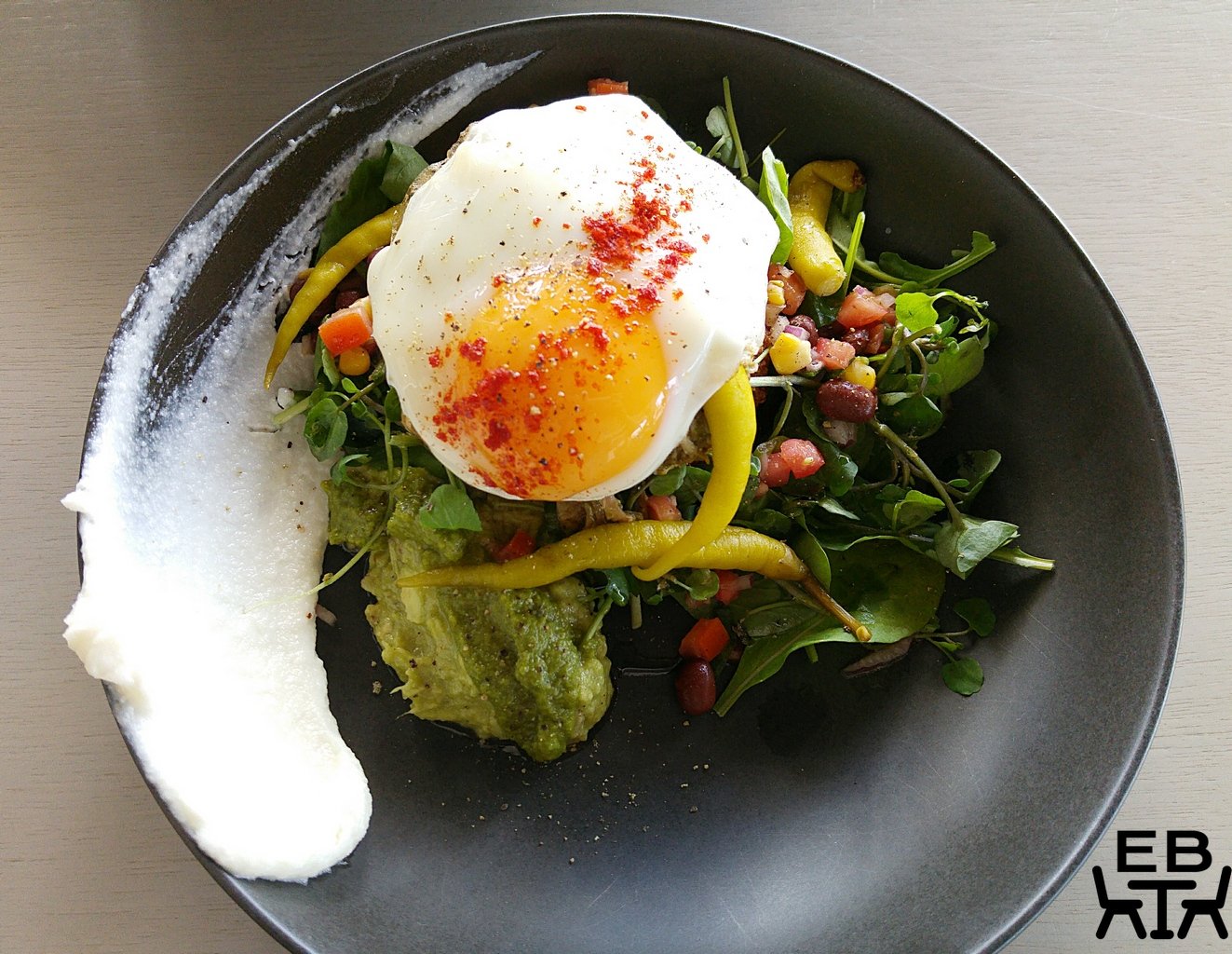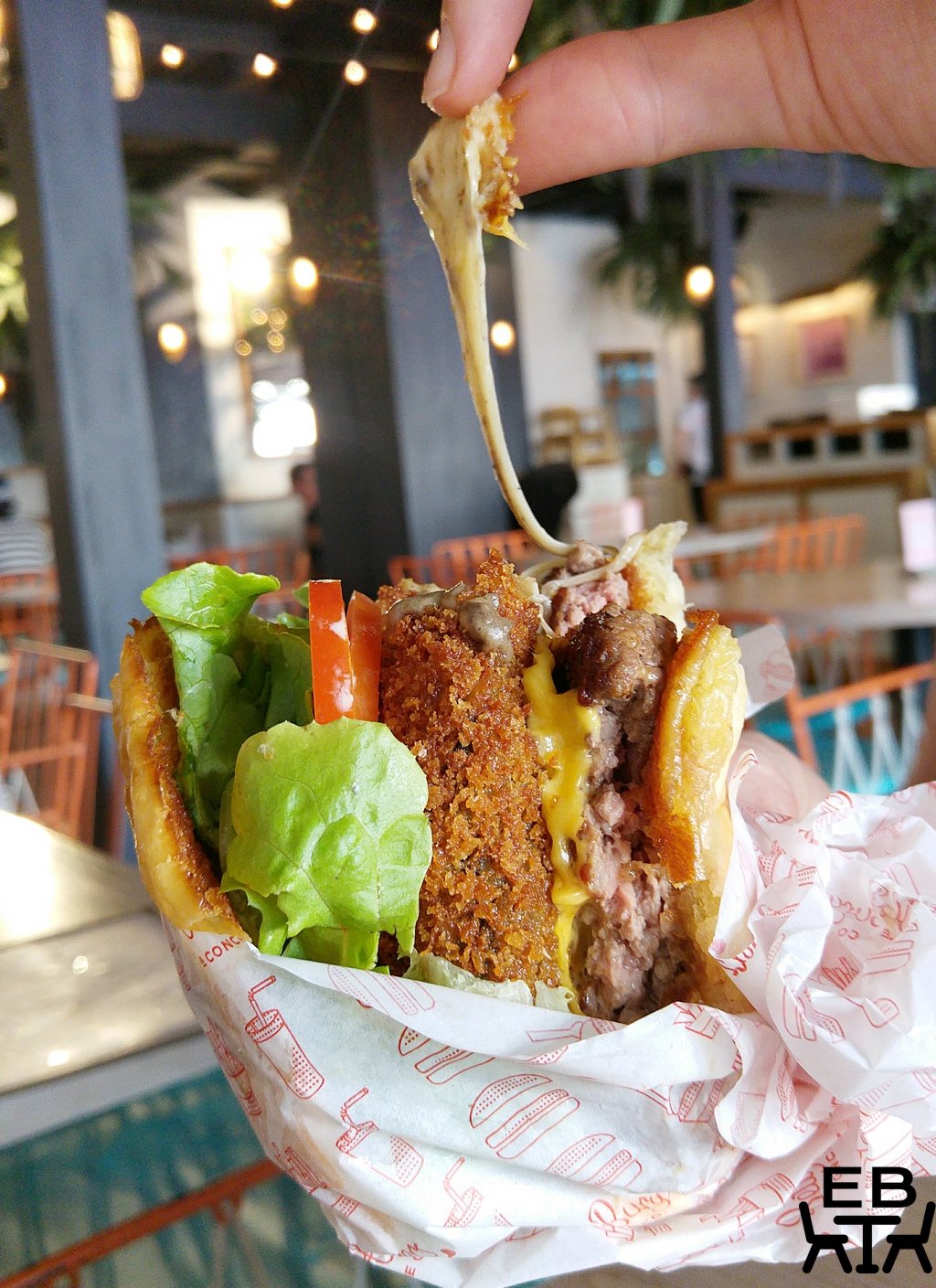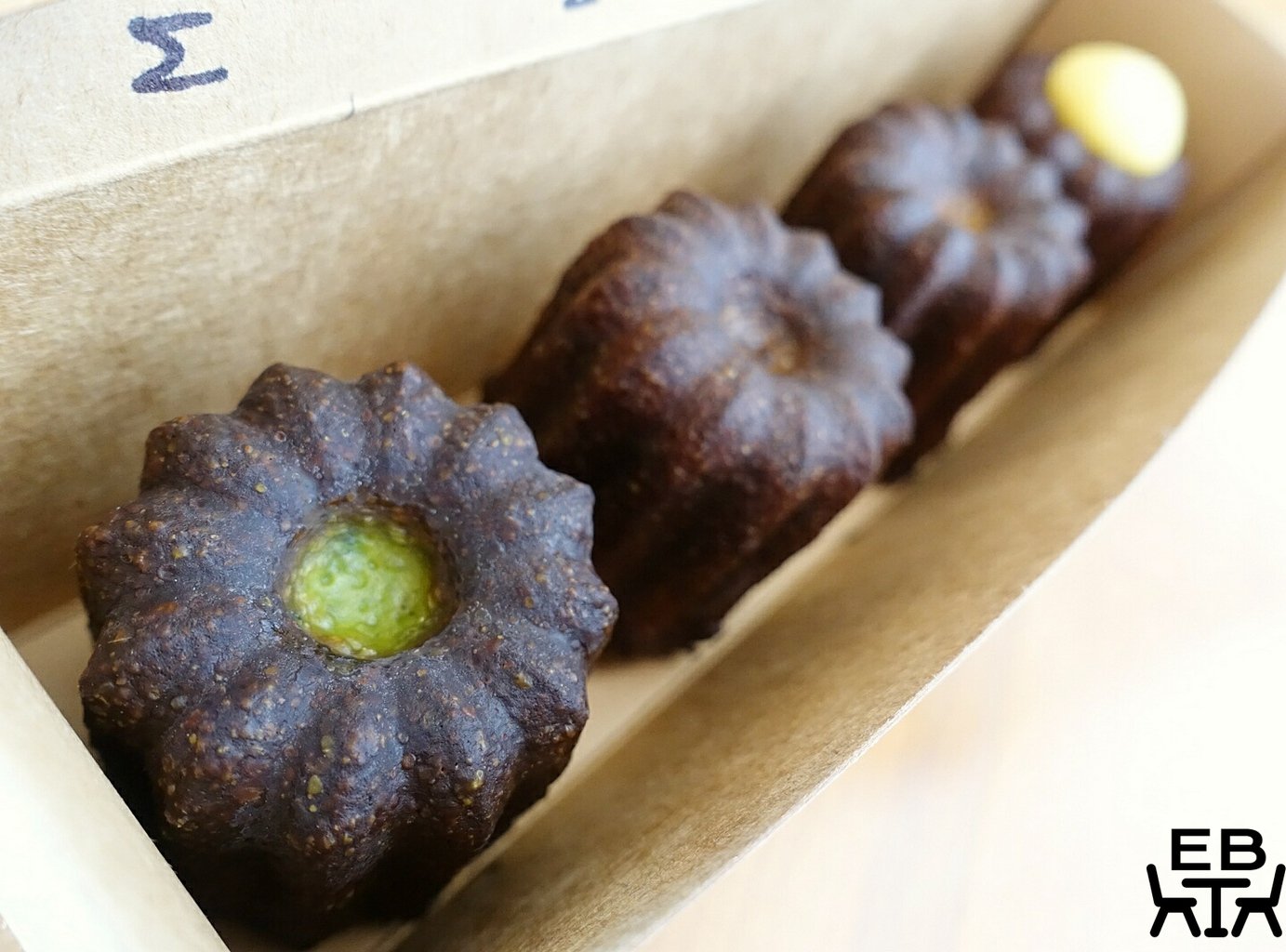Last updated on August 25, 2019
Noka is a venture by Open Farm Community in the recently renovated Funan Mall. The mall has had quite an impressive revamp, and if you know what it was like before, it has pretty much been entirely redone. It has a host of novel concepts, including a cycling track that runs through the ground floor area, a multi-story climbing wall that catches your eye at the core of the mall, and Noka’s rooftop garden farm.

Noka caught our eye when we were perusing social media for ideas for places to eat on our trip. Their dishes were beautifully presented, and us being partial to Japanese food was an added factor in their favour.
Getting to Funan Mall was easy, even as a tourist, via public transport. It is an easy walk from City Hall MRT station. Even though it is not connected to the station by an underground walkway, as many of the larger shopping centres are (you can traverse just about the entire stretch of Orchard Road’s malls without having to set foot outside), it is not too far away.
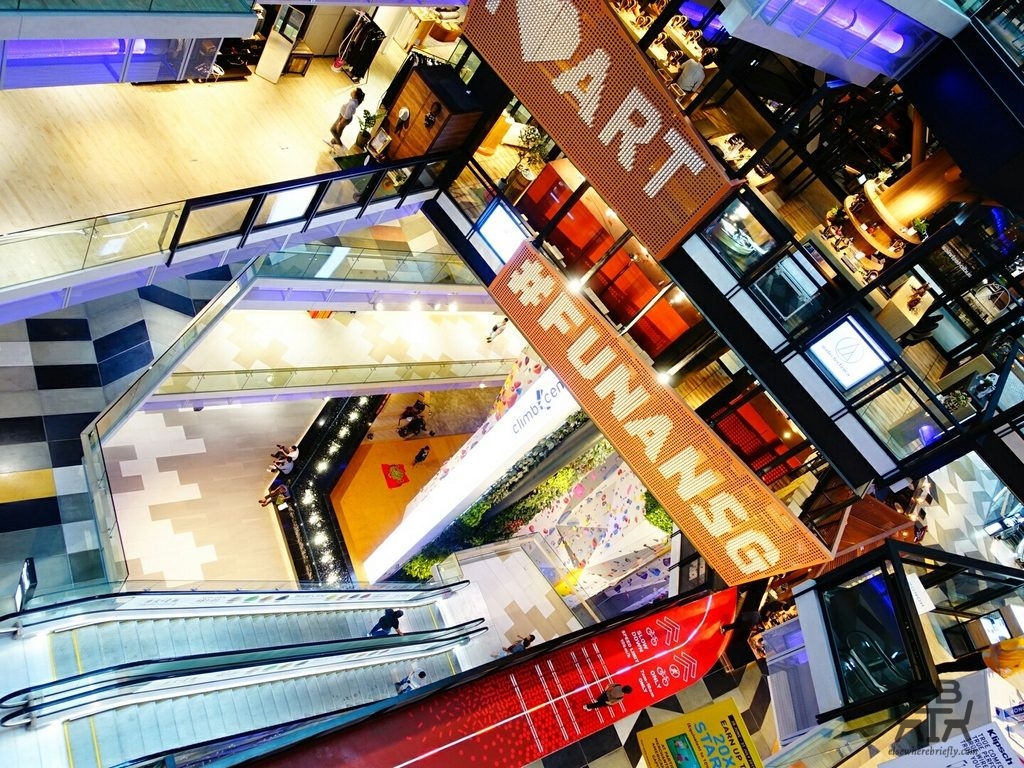
Getting to Noka though, can be a little more challenging, depending on which route you take. Some sections of Funan Mall are still being done up, so there are service elevators that won’t actually get you to where you intend to go. The lifts from just one area will take you there (lobby A). The others won’t. The other way to get there is by walking through the rooftop garden, which you get to by going up the stairs beside Godmama, another eatery, on the fourth floor.
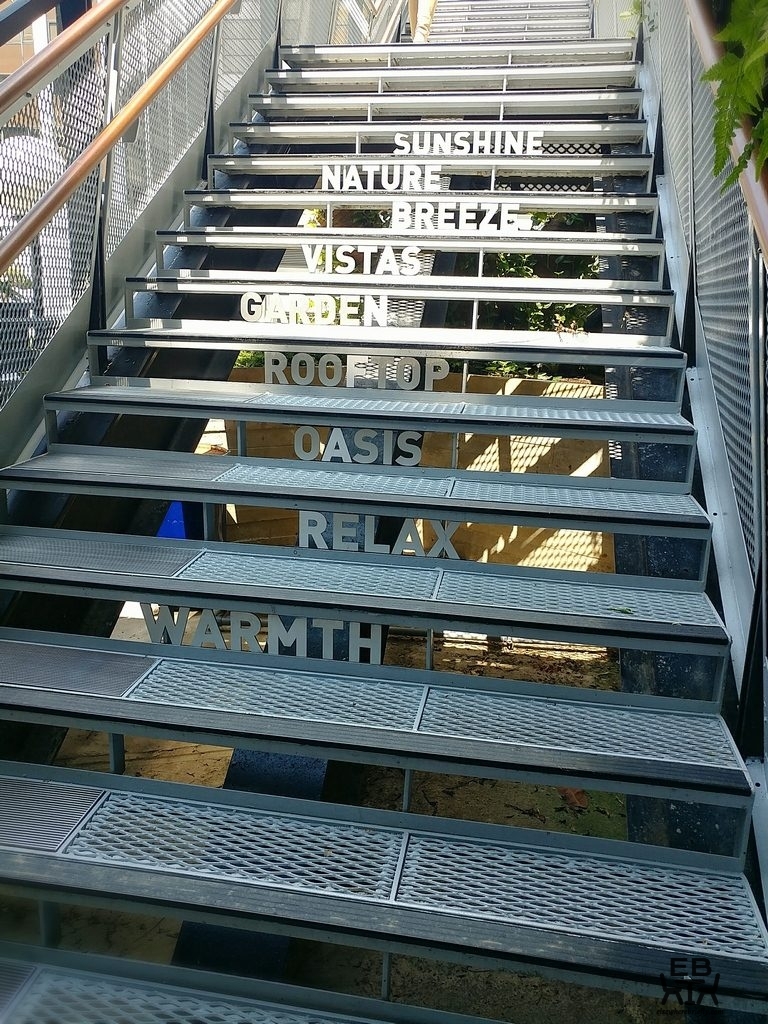
Both ways bring you to the same entrance, where an eye-level sign clearly indicates that it is Noka. You can see a little way into the eatery from there, but the L shape of the space means that most of it is hidden from view.


We were greeted by staff as we walked further into the main area. Anticipating that it might be busy on a weekend lunchtime, we had made a booking ahead of time. Staff confirmed that and showed us to the arranged seats. A sushi counter ran along one side of the restaurant, in keeping with the Japanese cuisine that Noka serves. We were seated not at the counter, but at a table further past that, letting us look out to the rest of the restaurant space.

Glass windows along two sides of the restaurant let plenty of daylight in, partly filtered by translucent semicircles with pressed flowers in them. White parasols hung from the ceiling above, forming an ethereal canopy. The pale wooden hues of the floorboards and the furniture maintained the airy feel. The tables and chairs had simple, organically curved forms, like branches.

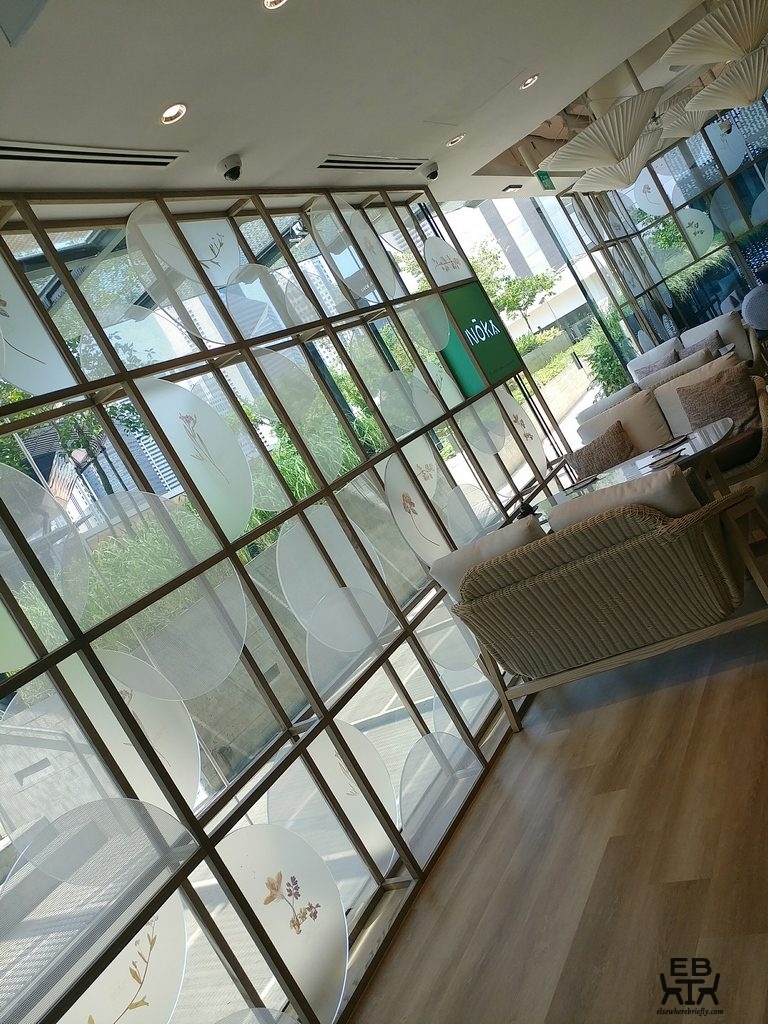
We were brought menus, hardcover books with gradients of colour, transitioning between a similar mint green shade as that used on the sign at the entrance, to a storm grey. The food and drink menus each had the colours changing in opposite ways, which would have helped the staff differentiate them more easily.

The first page of the food menu explains their philosophy. They aim to use locally grown and sourced ingredients, which is a novelty and a challenge in the land-scarce concrete jungle that is Singapore. The rooftop garden is one source of their produce, and, as one of the staff members later told us, another area in Queenstown. Along with their sister restaurant, Open Farm Community, they also have a strong sustainability focus.

The menu contained dishes cooked with Japanese techniques, but with local and modern twists, for instance the Kampong Yakitori, which had charcoal grilled (kampong) chicken thigh, and mushrooms that they had grown, and the Black Cod Saikyo-Yaki, which was black cod marinated in miso, sweet potato, sea grape, ikura, pulut hitam furikake, Mexican tarragon they had grown, and white sesame sauce. We were very tempted by the Omakase, but had just come from a large breakfast, and had a multi-course dinner pending, so opted instead for the Lunch set. The set gave you a choice between two options each for the starter, main, and dessert. We wound up selecting the same things for the starters and mains, diverging only at dessert.
To go with our meals, we also had their house Lemongrass Oolong tea. You can either have it hot or cold, and $6 gets you as many refills as you can drink. It had pleasant flavours, and the notes of both the oolong and the lemongrass were well balanced. While not a typical combination, it worked, and, like the food, was a local twist.


Staff also came to tell us about the specials available. We learned that fish had just been flown in today, so there were a couple of off-menu items the chef would prepare. Unfortunately, we can only remember one of the two items, which was the hamachi carpaccio we ordered (the description was so good, we couldn’t go past it).
The hamachi carpaccio came out beautifully presented, the hamachi slices laid out along a long, rectangular plate, garnished with fronds of fennel and little flower petals. These added a lively brightness to the dish, and made it look fresh. We were told that the flowers were from a Mexican plant, and were known to be rich in antioxidants. The hamachi was sliced in the thickness one would anticipate for a sashimi, rather than the sliver-like thinness you would usually get in a carpaccio. It worked better that way though, as you could then appreciate the texture of the fish. It had a little drizzle of lightly flavoured savoury dressing over it, and, we discovered, finely diced bits of truffle. There was a definite truffle aroma to it, but just enough that it was present, without being overpowering. It complimented the hamachi well.



We picked the Organic mushroom salad entree over the Noka green ginger salad because we rather like mushrooms and their different textures. The mushroom salad was also in the appetiser section of the menu, and was listed as having Edible Garden City golden mushrooms and kale, goji berries, and fresh wasabi dressing. Like the hamachi dish, vibrant flower petals gave the plating a punch of colour. Staff confirmed for us that they were marigold and butterfly pea petals. The mound of fresh green leaves hid the mushrooms, so it was like foraging to find them for yourself. Some of the mushrooms were cooked so they were tender and juicy. Others had been done as a tempura, the light, crunchy batter adding a contrasting texture to it. The wasabi dressing had a subtle heat rather than being fiery.



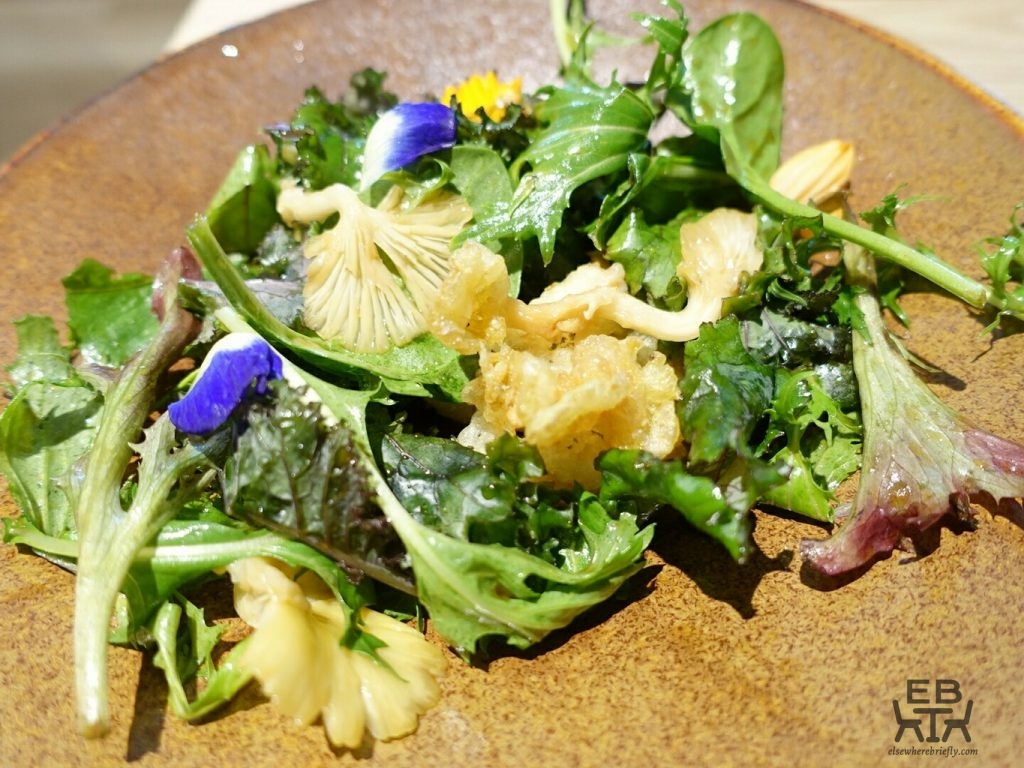
For the main, we had both chosen the Bara chirashi. Sushi moriwase was the other option, but we both felt like a chirashi would be a little more substantial. Once again, there was plenty of colour in the presentation, not only from the pieces of fish, but from flower petals and microherbs. They certainly know that diners eat with their eyes first, and that these days, lots of people take photos of their food. To that end, the tamago cleverly had “Noka” burned into it, so the name of the restaurant will unavoidably be in all pictures of the dish. The raw fish was cut into bite-sized pieces. You could still tell that the fish was fresh, and it was not masked by a heavy marinade. Staff invited us to eat it with the house-made soy sauce for stronger flavour. The chirashi also came with a few pieces of uni, that we found fresher than those we had at some stalls at Hokkaido’s Yochoko Market (although they may have been tourist traps). The sushi rice was nicely sticky, so you could marshal it into clumps to eat with the fish pieces. It also had the right light, vinegary tang.




Dessert was the course where we did order different items. The options were either a Black sesame creme brulee, or Green tea gelato.
The Black sesame creme brulee was served in a bean-shaped dish , the surface a more uniformly chocolatey shade than the usual patchy burnish one is used to seeing on lighter-based creme brulees. A blueberry, a bright red raspberry, and a sprig of Mexican tarragon livened up the appearance of the dish. The top was well bruleed and crisp, and had a satisfying crack when tapped with the spoon. The black sesame mix beneath it was richly black sesame, and not just the suggestion of black sesame. It had more of a mousse texture than a typical custardy one, and a little gritty, as black sesame tends to be. It was not too sweet overall, and those who like black sesame will appreciate the black sesame taste not being masked.


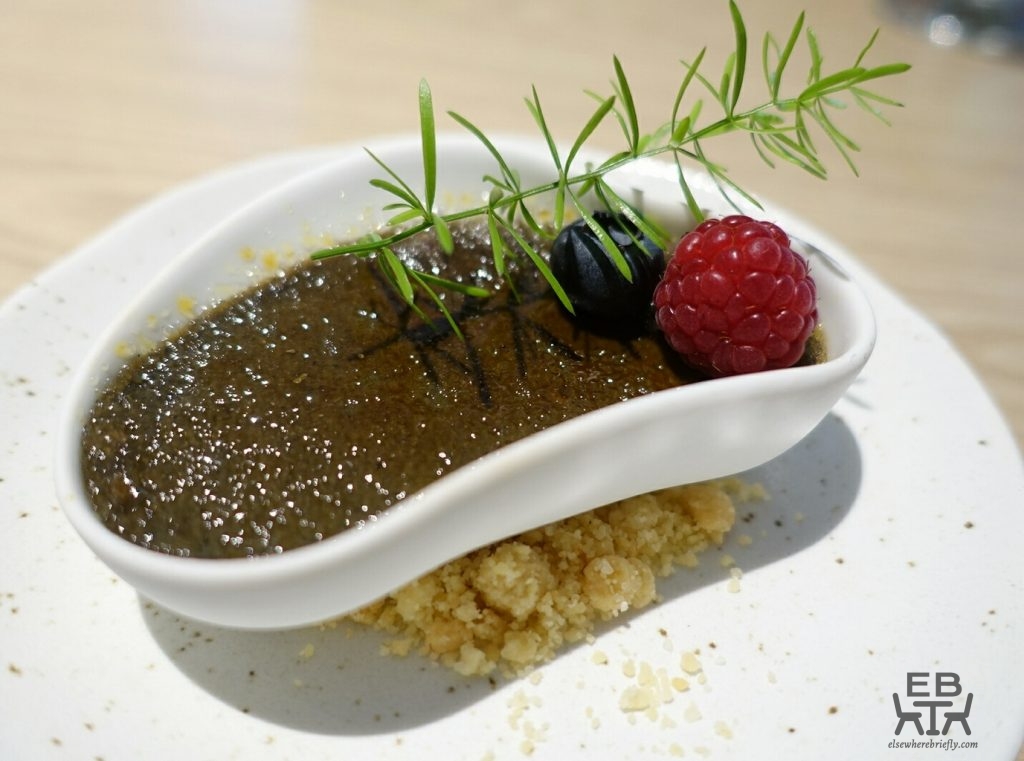
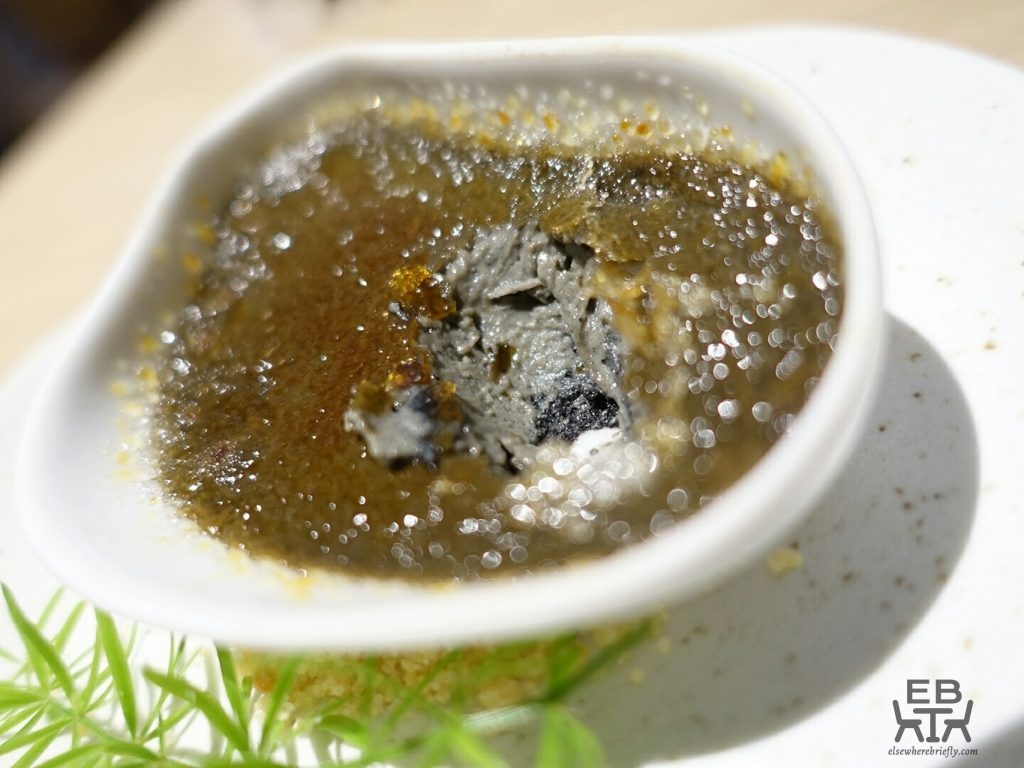
The Green tea gelato was neatly presented, a single scoop of the gelato in an ice cream glass. They accentuated the presentation with a slender pandan leaf that flicked out of the bowl, and a vibrantly violet butterfly pea flower petal on the gelato. The gelato was smooth, and had good strength of flavour. It was accompanied by sweetened red beans, a classic combination. Underneath the gelato, we found jelly cubes. There were a couple of different types, a clear one and a green one. The green one was, as one might have anticipated, matcha. The clear jelly had a crisper texture, more an agar jelly, and tasted of lemongrass.



The food at Noka was beautifully presented, and care had clearly gone into each dish. The set lunch was a well-priced way to try a number of dishes. With more time and space, we might try the Omakase at another visit. The waitstaff were professional but warm, and again, there was attention to detail. They were knowledgeable about the food being brought out, and were happy to answer any questions we had. They worked out that we were from Australia, from the number we had listed for the reservation, and conversed with us about things to do locally, as well as alluding to their own experiences in Australia.

Noka ticks a lot of boxes, presenting well-considered food in a pleasant setting, with an awareness of where it fits in the setting of a broader ideology. It is definitely worth visiting, and for urbanites, an experience of more than food.
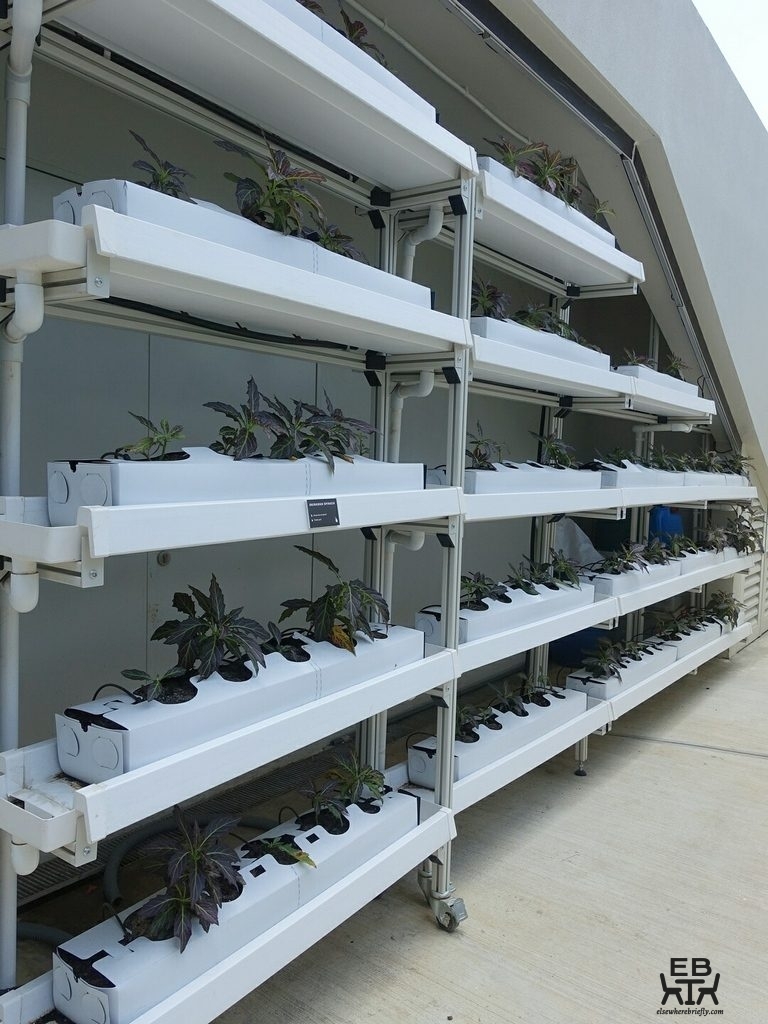

Scores:
Food: 3.5/4
Setting: 2/2
Service: 2/2
Total: 7.5/8
Price point: Set lunch $45++.
Value: Good, for what you get.
Details:
Address: #07-38 Funan, 109 North Bridge Road, Singapore
Phone: +65 6877 4878
Website: Noka

